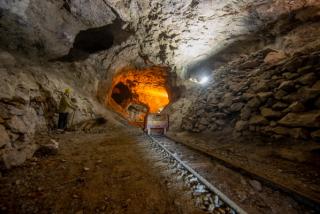
What Lies Beneath: The Geotechnical Challenge of Building Wind Energy on Former Mines
by Rannel Naidoo
View post

Noise Impact Assessments (NIAs) are becoming increasingly prevalent as part of the development process. The terms 鈥榥oise鈥� and 鈥榠mpact assessment鈥� aren鈥檛 anything new, but the requirement to complete one is increasing.
Undertaking a Noise Impact Assessment doesn鈥檛 have to be a requirement to be beneficial. Being aware of the potential noise impact of a project, at the early stages of design, can save money and time. Imposed mitigation, shutdowns or retrospective assessment cause all sorts of headaches and issues, and a proactive Noise Impact Assessment can help reduce these challenging events as a developer or environmental manager.
A Noise Impact Assessment can be defined by the two elements in the phrase: Noise and Impact Assessment.
Noise is unwanted sound.
Most people will use 鈥渘oise鈥� and 鈥渟ound鈥� interchangeably, thinking that they are the same thing. The difference is that sound is the physical phenomenon of an acoustic wave moving through a medium. The medium we typically consider is air, but it can be any solid, liquid or gas. Sound is also defined as the perception of these waves, be it human or by an animal. Remember the age-old question: if a tree falls in the forest, does it make a sound? The answer is yes and no.
The term 鈥渘oise鈥� adds a subjective interpretation of sound to make it unwanted. Think of it like this: sound is objective, and noise is subjective. The mix-up occurs due to the assumption that all sound is unwanted. But this isn鈥檛 the case.
Imagine the following scene: you鈥檙e the kind of person who loves to spend time at the beach and can鈥檛 wait to hear the ocean. You鈥檙e relaxing on a beach, listening to the waves lap on the sand. A scene of paradise! You likely wouldn鈥檛 think this a place with unwanted sound, or noise.
Now consider the same scene but you鈥檙e trying to listen out for the sound of a rare budgie, with a faintly audible song. The problem is that you can鈥檛 hear anything except the waves lapping on the beach. You would now class this same sound from the ocean as unwanted sound, or noise. The only thing that has changed is the context and interpretation of the person in the situation. The sound of the waves hasn鈥檛 changed.
Therefore, referring to all sound as noise is not always true.
Let鈥檚 consider another situation our team came across a few years ago, from a Noise Impact Assessment perspective.
An industrial site was being constructed in a rural area. The main haul route for the construction trucks was next to a small group of houses. As part of the conditions of the permit, the sound level from the trucks passing needs to be measured. The trucks passed the houses regularly throughout the day. Sound due to construction is typically classed as noise, as it is presumed the noise will have a negative response from the homeowners.
However, on speaking to the residents of the houses when measuring the sound from trucks it was evident that the residents enjoyed the trucks going past. Most of the residents were retired and stated that it was nice to have some activity to watch. The sound from the trucks provided them with excitement that something was happening in the village. Assuming all sound is unwanted in a Noise Impact Assessment is not always applicable.
To counter this, there are people who would consider the trucks as unwanted. So, we also can鈥檛 assume the sound is wanted. It鈥檚 important to be careful with subjective assumptions of the assessment of sound.
Noise is a pollutant and can lead to significant adverse health effects. In fact, the concluded that noise is the second largest environmental cause of health problems. This second only to the impact from air quality particulate matter. Long term noise exposure above 55 dB(A) can lead to all sorts of nasty things, such as long-term effects on mental and cardiovascular health including elevated blood pressure and heart attacks.
An impact assessment is the evaluation of changes due to the introduction/removal of something, in this case sound/noise. The extent of the impact is assessed, typically before the change happens. Impact can be positive or negative depending on perspective and context.
A Noise Impact Assessment (NIA) is the combination of both of those elements. Essentially, looking at the changes due to the introduction of an activity that produces sound, with the assumption that the sound being generated is generally unwanted, like trucks driving by, or a new receptor is introduced to a location near to an existing sound source, like a new housing development next to a highway.
The type of Noise Impact Assessment varies depending on the jurisdiction. There is variance on the approach to a Noise Impact Assessment within counties, municipalities, provinces, states, countries and for the type of sound source. The difference in approach has been influenced by many things over the years. These are typically differences in political pressure, public complaint frequency, response from authorities, culture, types and scales of activities, and the proximity of people to activities that generate sound.
Part Two of this series can be found here, where we discuss some additional considerations when undertaking a Noise Impact Assessment.